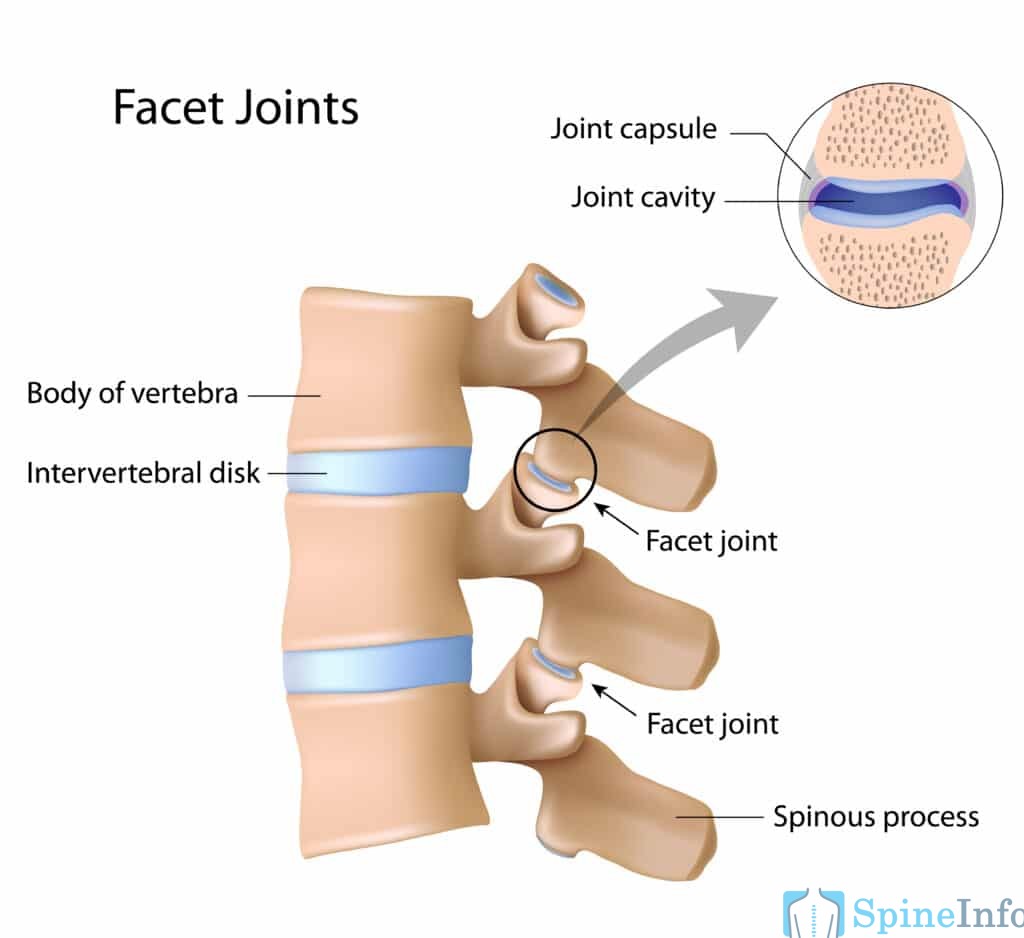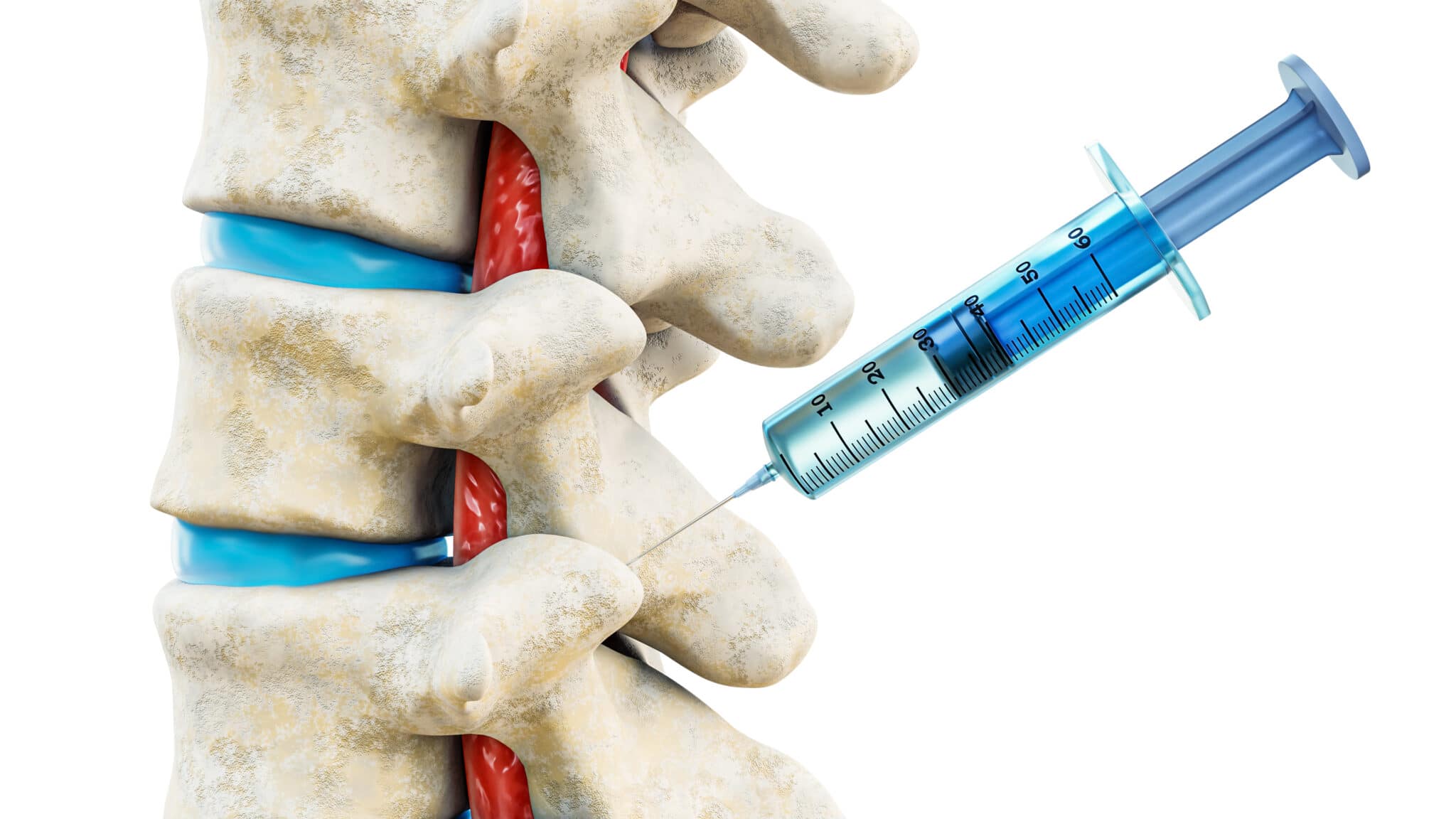What is a facet joint injection?
A facet joint injection is a medical procedure in which a local anesthetic and a steroid medication are injected into one or more of the small joints located between the vertebrae of the spine, called the facet joints. The goal of the injection is to alleviate pain and inflammation in the facet joint and surrounding tissues.
The injection is typically administered under fluoroscopy (a type of X-ray imaging) or ultrasound guidance to ensure accurate placement of the medication. The injection is usually performed on an outpatient basis and takes only a few minutes to complete.
Facet joint injections are also known as intraarticular facet joint injections, zygapophysial joint injection, or facet injection.
What is a facet joint?
A facet joint, also known as a zygapophysial joint, is a small joint located between the vertebrae of the spine. Each vertebra has two facet joints, one on each side, and they work together to help the spine move and bend.
Facet joints are covered with cartilage and are surrounded by a capsule filled with synovial fluid, which helps to lubricate the joint and reduce friction during movement. The joint is also surrounded by ligaments and muscles that provide stability and support.
Facet joints can be a source of pain and inflammation, particularly as a result of conditions such as arthritis.

How do facet joint injections work?
Facet joint injections work by delivering a combination of a local anesthetic and a steroid medication directly into the facet joint. The local anesthetic (such as lidocaine or bupivacaine) works to numb the joint and provide immediate pain relief. The steroid medication (such as cortisone) helps to reduce inflammation and swelling in the joint, providing longer-term pain relief.
Which conditions are treated with facet joint injections?
Facet joint injections may be used to treat a variety of spinal conditions that cause pain and inflammation, including:
- Facet joint syndrome: A condition in which the facet joint is irritated or inflamed, causing pain and stiffness in the neck or back.
- Arthritis: A chronic condition that causes inflammation in the joints, including the facet joints.
- Spinal stenosis: A narrowing of the spinal canal that puts pressure on the nerves and causes pain in the back or legs.
Facet joint injections may also be used as a diagnostic tool to determine the source of a patient’s pain. By injecting a local anesthetic into the facet joint, the healthcare provider can determine whether the joint is the source of the pain. If the patient experiences significant pain relief after the injection, it suggests that the facet joint is the source of their pain.
Who performs facet joint injections?
Facet joint injections are typically performed by a qualified healthcare professional, such as a pain management specialist, anesthesiologist, interventional radiologist, or physiatrist (a physician specializing in physical medicine and rehabilitation).
What to expect during the procedure
During a facet joint injection procedure, the patient will typically lie face down on a table, and the healthcare provider will clean the skin over the injection site. In some cases, the patient may receive a mild sedative to help them relax during the procedure.
Using fluoroscopy (a type of X-ray imaging) or ultrasound guidance, the healthcare provider will locate the facet joint that is causing the patient’s pain. They will then inject a small amount of a local anesthetic (such as lidocaine or bupivacaine) to numb the skin and tissue around the joint.
Once the area is numb, the healthcare provider will insert a needle into the facet joint and inject a combination of a local anesthetic and a steroid medication (such as cortisone) into the joint.
Are facet joint injections painful?
The facet joint injection procedure may cause some discomfort or pain, but most people tolerate it well with the help of local anesthesia and sedation.
How long does the procedure take to complete?
A facet joint injection procedure typically takes about 15-30 minutes to complete
What is the recovery time after a facet joint injection?
Most people can resume their normal activities within a day or two of the procedure.
You may experience some mild discomfort or soreness at the injection site for a few days, and your healthcare provider may recommend that you avoid strenuous activities or heavy lifting during this time.
Returning to work after a facet joint injection procedure will depend on the nature of your job and the level of physical activity involved. If your job involves minimal physical activity and you feel comfortable, you may be able to return to work the day after the procedure. However, if your job involves heavy lifting or other strenuous activity, you may need to take a few days off to allow for adequate recovery.
How long do they take to work?
Some people may experience immediate pain relief, while others may take several days to a week to feel the full effects of the injection.
How long do the effects last?
In general, the effects of facet joint injections can last from several weeks to several months.
What are the risks?
As with any medical procedure, there are risks associated with facet joint injections. However, the risks are generally low and the procedure is considered safe for most people. Some of the potential risks of facet joint injections include:
- Infection: There is a risk of infection at the injection site, although this is rare. Proper sterilization techniques are used to minimize this risk.
- Bleeding: There is a small risk of bleeding, particularly in people who are taking blood-thinning medications.
- Allergic reaction: In rare cases, people may experience an allergic reaction to the medication used in the injection.
- Nerve damage: There is a small risk of nerve damage during the injection, which can cause numbness, tingling, or weakness in the affected area.
It’s important to discuss the risks and benefits of facet joint injections with your healthcare provider before the procedure. If you experience any unusual symptoms or complications after the injection, you should contact your healthcare provider right away.
What is the success rate of a facet joint injection?
Facet joint injections have shown long term success in over 60% of people (Chaturvedi 2009)
It should be noted that there are no large studies into the effectiveness of facet joint injections and the North American Spine Society (NASS) has taken the position that there is insufficient evidence to make a recommendation for or against the use of facet joint injections in patients with chronic back pain.
Are facet joint injections right for me?
Facet joint injections may be recommended if you have chronic back or neck pain that has not responded to other treatments, such as physical therapy, medication, or rest. They may also be recommended as a diagnostic tool to help pinpoint the exact source of your pain.
It’s important to discuss the risks and benefits of the procedure with your healthcare provider to determine if it is an appropriate treatment option for you.
References
Chaturvedi A, Chaturvedi S, Sivasankar R. Image-guided lumbar facet joint infiltration in nonradicular low back pain. Indian J Radiol Imaging. 2009;19(1):29-34. doi:10.4103/0971-3026.44522
